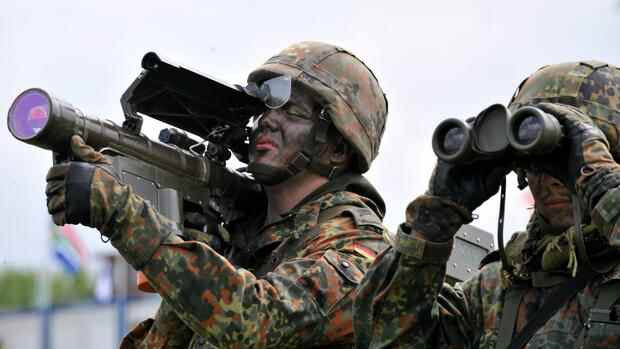The European Union’s money for the armaments comes from the peace facility, a financial pot that was created less than a year ago.
(Photo: dpa)
Berlin, Brussels The EU is now coordinating the weapons donations from its members with a clearing house in Brussels and is making 500 million euros available for weapons and military equipment itself. “Until now, it was believed that the European Union was a peace union and not a military union, and that it was therefore not allowed to supply arms to a third country,” said foreign policy chief Josep Borrell after a meeting of EU defense ministers. “But that’s exactly what we’re doing now.”
The money could be used, for example, for small arms, ammunition, artillery, anti-tank missiles and air defense, said a spokeswoman for the EU Commission. The material is to be brought to Ukraine via a logistics base in Poland. The delivery of fighter jets is also under discussion. “Ukraine has an urgent need for combat aircraft,” the spokeswoman said. The air forces of several Eastern European countries still have Soviet-made aircraft.
In order to be able to deliver fighter jets to Ukraine, Ukrainian pilots would have to get the planes across the border, said military expert Christian Mölling, research director of the German Society for Foreign Relations. Otherwise the impression could arise that a NATO state is intervening in the conflict. “Then you risk a military escalation,” said Mölling.
It is also important to deliver such weapons, for which Ukrainian soldiers are also sufficiently trained. These included simple anti-tank missiles of the Stinger type. You first have to be trained to operate complex defense systems or Leopard tanks. “The Ukrainians themselves still use very old products from the Soviet era,” Mölling pointed out.
Top jobs of the day
Find the best jobs now and
be notified by email.
50 million euros of the money provided is not intended for weapons, but for fuel, protective equipment and other equipment. The EU also wants to help with satellite reconnaissance. The European satellite center in Madrid is currently being mobilized for this purpose, said Borrell. That’s what Ukraine asked for.
Concern for Moldova and Bosnia-Herzegovina
In addition, the NATO mission in Bosnia-Herzegovina will be strengthened with 500 soldiers. There and in Moldova, Borrell sees the danger of destabilization attempts by Russia in the coming days.
The EU foreign policy chief thanked Germany for the announcement that it would significantly increase defense spending. This and the sanctions would have high costs for the Europeans. “But if we don’t pay the price today, we will pay a significantly higher price tomorrow,” he said.
The European Union’s money for the armaments comes from the peace facility, a financial pot that was created less than a year ago. Originally, military equipment was to be financed primarily for partner countries in Africa, but no weapons were to be financed. It contained a total of 5.7 billion euros for the years 2021 to 2027.
The decision to reallocate the funds was made very quickly, Borrell said. After the heads of state and government decided on sanctions on Thursday, it became clear to him that this was not enough. The Ukrainians fought resolutely. “Kyiv resists, Kharkov resists, Mariupol resists. And Russia is paying a high price with many losses,” Borrell said. “We must now do everything we can to help Ukraine.”
